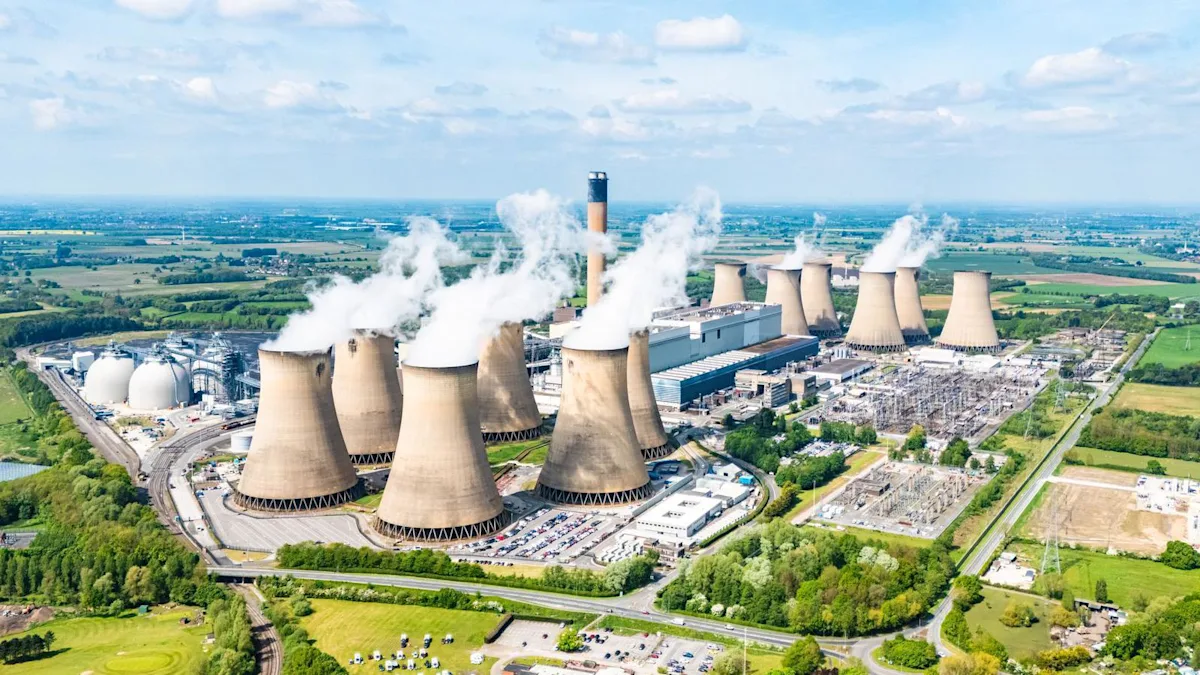
The United Kingdom and the United States are set to sign a historic agreement this week aimed at fast-tracking the development of nuclear power, creating thousands of jobs, and bolstering Britain’s long-term energy security.
The deal—expected to be formalised during US President Donald Trump’s state visit—will unlock billions in private investment and mark a new era of transatlantic cooperation on clean energy.
Prime Minister Sir Keir Starmer hailed the initiative as the beginning of a “golden age of nuclear,” positioning the UK and US “at the forefront of global innovation.”
According to the government, expanding nuclear capacity will help cut household energy bills, generate skilled jobs, strengthen energy security, and combat climate change.
The Atlantic Partnership for Advanced Nuclear Energy
The new pact, known as the Atlantic Partnership for Advanced Nuclear Energy, will streamline regulations to make it quicker and cheaper for companies to build nuclear power stations in both countries.
Currently, licensing for nuclear projects can take up to four years—but under the new agreement, the process will be cut in half to just two years.
A “Nuclear Renaissance”
The deal is also designed to deepen commercial ties between UK and US firms. Among the flagship projects:
X-Energy (US) and Centrica (UK) plan to build up to 12 advanced modular nuclear reactors in Hartlepool, capable of powering 1.5 million homes and creating up to 2,500 jobs. The programme could be worth as much as £40bn, with £12bn earmarked for the North East.
Last Energy and DP World will collaborate on a micro modular reactor at London Gateway port, backed by £80m in private investment.
Holtec, EDF and Tritax are preparing to transform the former Cottam coal-fired plant in Nottinghamshire into a nuclear-powered data hub. Valued at £11bn, the project is expected to generate thousands of high-skill construction roles as well as permanent jobs in operations.
Centrica chief executive Chris O’Shea told the BBC that the nuclear rollout would “bring very stable prices to UK consumers” and give households more certainty over long-term energy costs.
The Rise of Modular Nuclear Power
A key focus of the partnership will be the development of small modular reactors (SMRs)—compact nuclear plants that produce up to one-third the power of traditional reactors.
Built in factories and assembled on-site like flat-pack kits, SMRs promise faster construction, greater flexibility, and lower costs. While the industry is still in its infancy, both governments see modular technology as a cornerstone of the next generation of nuclear energy.
Wider Ambitions
The agreement also covers:
Fusion energy research, pushing the boundaries of next-generation clean power.
A commitment to end UK-US reliance on Russian nuclear material by 2028.
Energy Secretary Ed Miliband said:
“Nuclear will power our homes with clean, homegrown energy. The private sector is building it in Britain, delivering growth and well-paid, skilled jobs for working people.”
His US counterpart, Chris Wright, described the deal as ushering in a “nuclear renaissance,” adding that it would help meet surging global demand for power, particularly from the energy-intensive AI and data industries.
Reviving the UK’s Nuclear Legacy
In the 1990s, nuclear provided around 25% of the UK’s electricity, but that share has since fallen to about 15%, with most ageing reactors approaching decommissioning. No new nuclear stations have been built for decades.
Now, with this deal, Sir Keir says he wants Britain to reclaim its place as a world leader in nuclear power.
The partnership builds on the UK’s recent push, including the Sizewell C project in Suffolk and plans for the first UK-built SMRs led by Rolls-Royce.
In November 2024, Britain joined 30 other countries in pledging to triple global nuclear capacity by 2050—and this week’s agreement with Washington is set to be a major step towards that goal.



